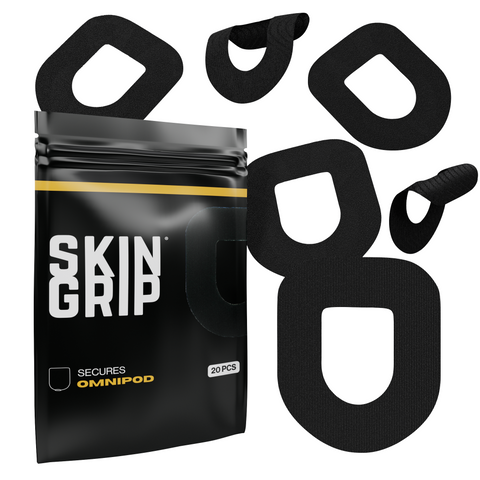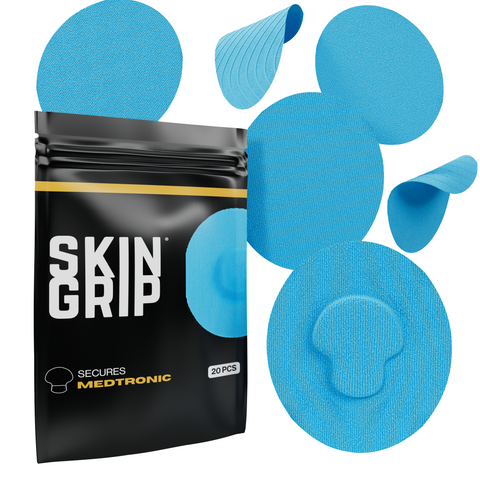This article was medically reviewed by Amanda Ciprich, MS, RD. Last updated on 2/28/24.

Whether you're a seasoned insulin pump user or new to this form of diabetes management, finding the best placement for insulin pump infusion sets can be challenging. In this blog post, we will discuss methods for choosing the most appropriate sites for each manufacturer, techniques for site rotation, and responses to commonly asked questions.
What is an insulin infusion set site?
An infusion set delivers insulin from the insulin pump to your body. Insulin flows through a thin, flexible tubing into a small steel needle or soft cannula that is gently placed under the skin and secured with an adhesive patch.

Where is the best place to insert an insulin pump and infusion site?
The best place to insert an insulin pump and infusion site differs from person to person due to several factors that affect insulin absorption. Since insulin is absorbed subcutaneously, it is important that insulin pumps and infusion sets are placed in areas that will reach the layer between the skin and muscle.
Placing insulin pumps and infusion sites near the muscle can result in faster absorption, shorter duration of effectiveness, and increased site discomfort. In general, the most common areas of inserting an insulin pump and infusion set include:
- Abdomen
- Thighs
- Upper Buttocks
- Upper Arms
- Lower Back
Each insulin pump manufacturer has specific recommendations for infusion sites and pod placements. You can explore the manufacturer recommendations by clicking on the links below:
- Medtronic infusion set placement
- Pod placement for Omnipod DASH and Omnipod 5
- Best practices for Tandem t:slim infusion sets
In which areas should a patient not insert an infusion set?
When it comes to infusion set placement, it is important to adhere to some general guidelines. This includes areas where insulin absorption could be slow or inconsistent, such as:
- Regions with pre-existing lipodystrophy or skin irritation
- Sites that experience frequent muscle movement
- Keeping a two-inch perimeter around the navel, areas with skin folds or scarring
- Locations susceptible to pressure from sitting, sleeping or tight clothing
- Bony areas or regions with minimal subcutaneous fat
How often do you change insulin pump sites?
The frequency of changing your insulin pump infusion sites can vary based on the type of infusion set you use and your individual needs. However, a common recommendation is to change the infusion site every 48 to 72 hours or every 2 to 3 days. This regular rotation helps prevent issues like skin irritation, inflammation, or decreased insulin absorption at a particular site.
The general recommendation for the following insulin pumps are:
- Medtronic: Medtronic MiniMed 770G, 670G, or 630G insulin pump users can use the Medtronic Extended infusion set that lasts 7 days. Other Medtronic infusion sets should be changed every 2-3 days.
- Omnipod DASH & Omnipod 5: Pod should be changed every 48-72 hours or after delivery 200 units of insulin.
- Tandem t:slim: Infusion sets should be changed every 48-72 hours.
FAQ for insulin pump and infusion set placements
Can I leave my infusion set in longer than 3 days?
In general, it is recommended to change your infusion set every 2-3 days to avoid skin irritation, infusion site reactions and other adverse effects.
What are the risks of wearing an infusion set longer than recommended?
- Decreased insulin absorption
- Skin irritation
- Increased infection risk
- Lipodystrophy
- Infusion set becoming kinked or occluded
- Pain and discomfort
- Less effective insulin
How to remember to change insulin infusion set
Some strategies to remember to change insulin pump infusion sets include:
- Set reminders
- Create calendar events
- Enlist a family member to keep track
- Use stickers or other visual displays on calendar
- Use site change reminder on insulin pump if available
- Change insulin pump at roughly the same time of day
Where does insulin work the fastest?
Generally, insulin is absorbed fastest in the abdominal region, while absorption tends to be slower in the arms, thighs, and buttocks. Several factors can impact the rate of insulin absorption, including the level of blood flow to the injection site, physical activity, injection timing, and scar tissue.
How to rotate sites with an insulin pump
Placing insulin pumps in a consistent general region, such as your abdomen, ensures insulin delivery as it maintains a consistent rate of absorption with each site change. However, it is not advisable to use the exact same spot repeatedly, but rather move within the same area.
A systematic site rotation method is the most effective approach to prevent overusing a particular site. Consider staying on one side of your body for several site changes, moving just a couple of inches each time—a minimum of 2 inches for angled infusion sets and 1 inch for 90-degree infusion sets. Keeping the previous infusion set on the body can serve as a useful reference point for placing the new one.
What happens if you don’t rotate your infusion set?
Overusing a specific site can lead to lipodystrophy, which can negatively impact insulin absorption and result in inconsistent blood sugar management.
What is the best insulin pump site for a child?
The best insulin pump site for children will vary depending on your child’s age, activity level, and preference. In some cases, families may opt for the upper buttock or upper arms to keep insulin pumps out of reach.
Can you put your insulin pump on your thigh?
You can place your insulin pump on your thigh, but you may want to consider placing your pump on the outer thigh. This location is often preferred because it typically has less muscle movement, making it a potentially more reliable and comfortable site for insulin infusion. However, individual preferences and comfort levels may vary.
About Amanda Ciprich, MS, RD
Amanda Ciprich, a registered dietitian with a specialization in type 1 diabetes, was diagnosed with T1D herself at the age of 18. With her expertise and personal experience, she has authored two books, including "The Caregiver's Guide to Diabetes: Practical Advice for Caring for Your Loved One." As the founder of T1D Nutritionist, a virtual insurance-based private practice, Amanda provides counseling and guidance to individuals with T1D and their families, supporting them in effectively managing diabetes.
Shop Insulin Pump Adhesive Patches

































